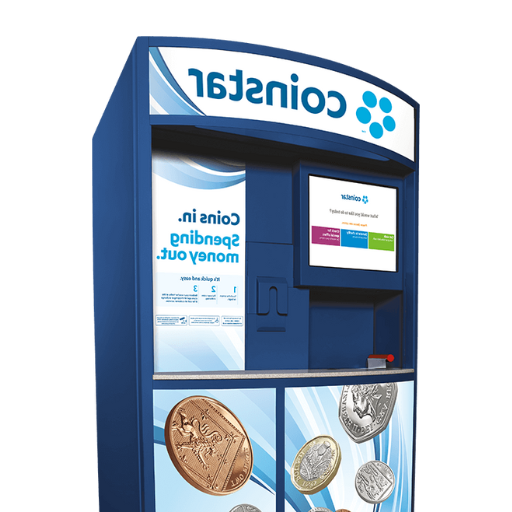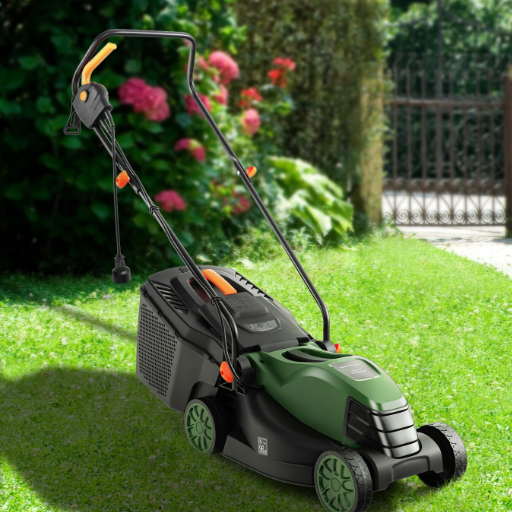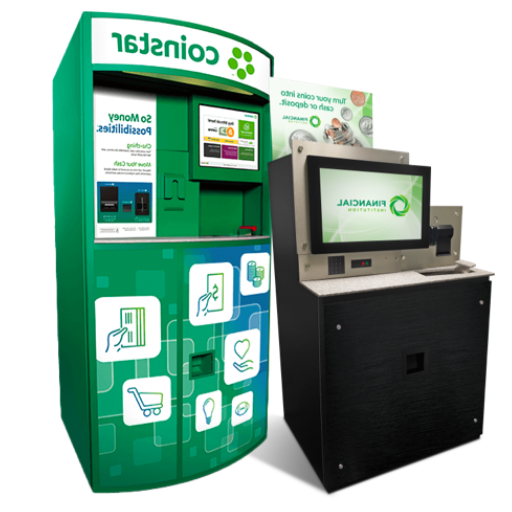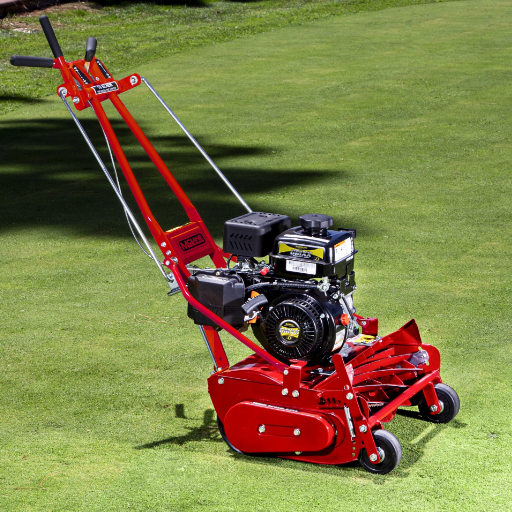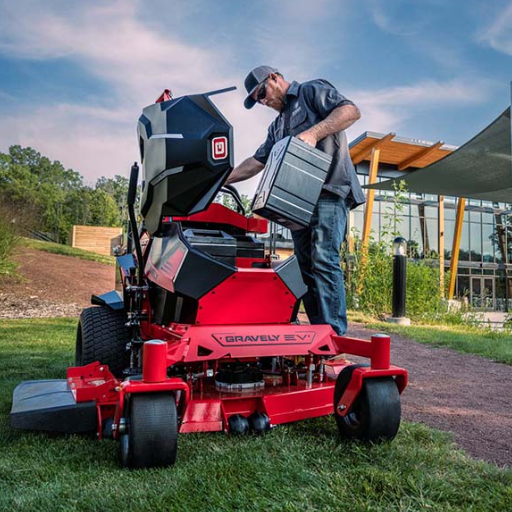A lush lawn is a source of pride and might be a daunting challenge. Whether it’s about working on a huge outdoor space or using alternative methods to care for a lawn, riding lawn mowers and tractors have genuinely revolutionized lawn care. This ultimate guide is here to transform the way you approach mowing and maintenance. Beginning with an in-depth understanding of the different types of riding mowers, this manual measures essential features and even compares one riding mower to another. Thus, by the end of this manual, you will have acquired enough knowledge to confidently make choices. Whether for your first purchase, for upgrading existing properties, or simple curiosity with ongoing innovations in lawn care, prepare to find tips, tricks, and insight to keep your lawn in fine shape all year round.
Introduction to Riding Lawn Mowers

A riding lawn mower is a powerhouse unlike any other, maintaining large parcels of land with ease. The massive push mower has a seat and steering wheel, giving the operator a much more relaxing and quicker option to cover new ground. Anything above half an-acre farms will appreciate one, with different types of styles to go by: lawn tractors for very basic mowing, garden tractors for heavier jobs, and zero-turn machines with that finer level of control when dealing with obstacles. When correctly matched to the activity it will allow one to save as much time, effort, and energy while also achieving equally charming results for the lawn.
What is a Riding Lawn Mower?
Riding lawn mowers are a better solution for the maintenance of medium-large-sized lawns, offering the right blend of power, speed, and precision. Most engines range from 12 to 25 horsepower, able to cut thick grass on uneven terrain. The deck is usually anywhere between 30 and 60 inches, giving the mowers different options to be suitable in mowing scenarios based on yard size and complexity of the landscape.
Another important feature is the adjustment of cutting heights, making these machines extremely versatile for different types of grass and various seasons: usually, adjustments range from 1 to 4 inches. Other ergonomic features of modern riding mowers include padded seats, cup holders, and control layouts designed to promote operator comfort during extended use periods. Other high-end riding mowers offer hydrostatic transmissions that permit gradual speed adjustment, as well as cruise controls that allow the mower to maintain constant speed during the mowing task.
Newer riding mowers are battery-powered electric types, offering clean, quiet operation; some can also communicate with an app for maintenance tracking or mapping mowing routes. These advances have increased efficiency while decreasing environmental impact.
Researches indicate that riding lawn mowers can cut mowing time by up to 75% compared with push mowers, especially on properties above an acre. Durability combined with a long service life makes it a worthwhile investment for both the householder and professional. Thus, taking a close look at what you need for the terrain, yard size, and working features will help you pick a model that will ease your life on lawn care.
History and Evolution of Riding Mowers
Historically, the riding mowers date to the mid-20th century when coeval with lawn care innovations and technology enhanced speed and convenience. Early riding mowers were introduced in the 1950s, with tractor designs as an inspiration. Such rudimentary models were often quite large and used mainly by commercial landscapers or owners of huge estates. However, from the 1960s onward, improved engineering and materials lowered costs and increased the riding mower’s practicality for the average homeowner.
Another arsenal came in with the advent of rear-engine riders, machines meant to easily mow residential lawns. The 1970s to 1980s hence proved to be an era of rapid expansion for manufacturers like John Deere, Toro, and Cub Cadet, who began making machines with features like adjustable cutting heights, hydrostatic transmissions, and superior fuel efficiency.
Today, these increasingly sophisticated and tech-endowed riding mowers promise their users with precise lawn care. Modern models offer zero-turn capabilities for maximum maneuverability, GPS navigation for precision mowing, and electric/hybrid engines to curb emissions and fuel consumption.
With the prospect of new AI integration and automation, an altogether newer era is being ushered into the world of riding mowers. Robotic riding mowers armed with sensors and the power of machine learning aim to further revolutionize lawn care through better accuracy and the ability to operate from afar. This marriage of traditionalism and technology will assure that riding mowers continue in their evolution to satisfy homeowner and professional requirements for years to come.
Why Choose a Riding Lawn Mower?
Riding lawn mowers blend efficiency with comfort to provide precision for maintaining a larger yard or landscaping professionally. Unlike conventional push mowers, the riding mowers are more efficient over expansive areas, with some product models mowing three acres or more in an hour. Due to their powerful engines and large cutting decks, riding mowers operate at faster speeds, offering great time and effort savings when compared with manual work.
Furthermore, these lawn mowers allow for adjustable cutting heights, so the operator can set the grass level for the final presentation. Also, most new riding mowers come equipped with comfort features such as ergonomic seating, hydrostatic transmissions for easy control, and top safety systems. Zero-turn and all-wheel-drive models provide the best control and stability over steeper terrains or uneven ground.
This appeal also stems from the versatility of riding mowers. Many machines come equipped with attachments such as baggers, mulchers, and even snow plows, thus making the machine useful for the whole year. Some riding mowers are even offering GPS-guidance systems, electric motors power for a greener way to mow, and Bluetooth connectivity for convenience, thanks to the wonders of technology. Since the riding mower is one promising innovation in lawn care for efficiency and features, it attracts owners and professionals alike to invest in it.
Benefits of Riding Lawn Mowers

Riding lawn mowers offer numerous benefits that make lawn maintenance easier and more efficient:
- Time Efficiency: Riding mowers cover large areas quickly, significantly reducing the time required to mow expansive lawns.
- Ease of Use: Designed for comfort, they require minimal physical effort compared to push mowers, making them suitable for all users.
- Versatility: Many models accommodate attachments for tasks like bagging, mulching, or snow plowing, providing year-round utility.
- Consistent Performance: Riding mowers deliver a clean, even cut across lawns of varying sizes and terrains, ensuring professional results.
- Convenience Features: Advanced models include features like electric engines, GPS navigation, and adjustable cutting heights for a tailored mowing experience.
For those managing large or complex lawns, riding mowers are a practical and dependable choice.
Efficiency in Mowing Large Areas
For carrying out maintenance on a very huge lawn, riding mowers are among the most efficient ways to do so. They take away that grinding effort and consume little time as compared to a push mower with respect to mowing an extensive area. For example, depending on different parameters in a different landscape, a typical riding mower might do the job within 1 hour mowing 2-4 acres. With a greater cutting width from 30 to 60 inches, they could cut through large swathes of grass or thick brush in one single stroke and are thus well suited for estates, parks, and sports fields.
With their advanced features, the modern riding mower makes yet another efficient profile. The zero-turn series, in particular, boasts extreme maneuverability, allowing operators to make sharp turns and trim odd-shaped corners with ease. Newer machines also feature very powerful engines, with the ratings going way beyond 20 hp for smooth operation on uneven and sloped terrains. Hydrostatic transmissions top the technological schemes, giving continuous speed control and much faster response than any manual one.
Other studies assert that riding mowers consume fuel efficiently when on larger properties. Fuel tanks holding up to 3 gallons, or sometimes even more, ensure longer stretches of operation without interruptions. Lesser fatigue to the operator and higher cutting precision make riding mowers a cost-effective and dependable option for maintaining large-scale green areas. The ability to cut fast with quality is the very factor fueling their popularity among homeowners and professionals.
Comfort and Convenience Features
The modern-day riding mowers are designed with the operator’s comfort and convenience at the forefront, incorporating advanced features meant to enhance the whole mowing experience. Many of these models now come outfitted with ergonomic, adjustable seats that include high backs and armrests to lessen the strain associated with prolonged use. Along with the steering improvements, zero-turn technology also provides precision control to maneuver even the most intricate landscapes.
Also, there is a rising integration of cup holders into riding mowers alongside easy-to-reach control panels and storage compartments-fueling the need for operators to stay hydrated while holding small tools or other essentials within reach. Some high-end mowers come fitted with suspension systems that reduce vibrations on uneven terrain for a smoother riding experience. With technology comes more conveniences such as cruise control, LED headlights for working in low light, and even Bluetooth for checking system diagnostics or streaming tutorials-an unprecedented level of convenience for older models.
Consumers who have settled for noisy engines and other hiccups such as poor fuel efficiency now fortunately reap better benefits. The quietest and emissions-free electric riding mowers represent an environmentally friendly and cost-saving technology that is steadily picking up market share. These manufacturers are wholesome with all the combinations of comfort and convenience that make the maintenance of large green areas not only efficient but also fun for all users irrespective of their skill levels.
Comparison with Push Mowers
In my opinion, riding mowers are better suited for use on larger lawns because of their efficiency and comfort. While a push mower will entail sterilizing your arms and legs and consume an inordinate amount of time, a riding mower allows me to traverse large tracts of land quickly, sitting comfortably the whole time. Riding mowers have more features: smaller cutting height adjustment and huge cutting decks that make the job much easier. I cannot, however, rule out a push mower being more suitable and economical for small lawns or tight spaces.
Key Features to Look for When Purchasing a Riding Lawn Mower
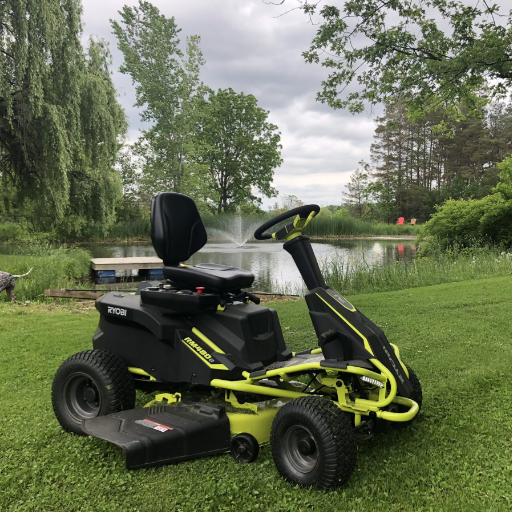
1. Engine Power
To accommodate the size and terrain of your lawn, select a mower with enough engine power. Thus, larger gardens or hilly areas will call for a more powerful engine for good performance.
2. Cutting Deck Size
The bigger the cutting deck, the more area you can mow in less time. In smaller lawns, a smaller deck allows for easy maneuvering in tight spaces.
3. Transmission Type
Note if you favor manual, automatic, or hydrostatic transmission. Hydrostatic transmissions are more enjoyable and exert less effort while operating on uneven terrains.
4. Turning Radius
A lesser turning radius is more suitable while turning alongside trees, garden beds, and other obstacles for accurate and more efficient work.
5. Comfort Features
Check for ergonomic seats, adjustable steering, and vibration-reducing features that allow for comfortable operation, especially over extended periods.
6. Durability and Build Quality
Build the mower using quality materials as it is going to be used every day and in different weather conditions. Durable models save money through longevity and fewer repairs.
7. Attachments and Versatility
Some models can accept attachments such as baggers, mulchers, or snow plows to make it a multipurpose tool with regard to yard tasks.
8. Ease of Maintenance
Choose a mower whose parts are easily accessible for cleaning or repairs and are supported by good customer service with readily available replacement parts.
9. Safety Features
Features like automatic blade shutoff or safety sensors will ensure safe operation should there be children or pets around during mowing.
10. Price and Warranty
Then review the price for what the lawnmower offers and go for one that carries a good warranty for your peace of mind.
Deck Size Options
When selecting a lawn mower, understanding the appropriate deck size is vital to achieve efficient and effective mowing. Deck size refers to the width of the cutting area, which directly impacts the time and effort required to mow your lawn.
- Small Deck Sizes (20-30 inches): Ideal for smaller yards or properties under 1/4 acre, these compact mowers provide easy maneuverability, making them suitable for tight spaces, intricate landscaping, and narrow pathways. They’re often lightweight, making them user-friendly and easy to store.
- Medium Deck Sizes (30-40 inches): For medium-sized yards ranging from 1/4 to 1/2 acre, a mower with a medium deck size strikes a balance between efficiency and flexibility. These sizes typically allow for quicker mowing sessions while still being manageable around moderate obstacles.
- Large Deck Sizes (42-54 inches): Perfect for larger properties of 1/2 acre or more, large deck sizes significantly reduce mowing time by covering more ground in fewer passes. These models are better suited for open, less obstructed areas and are commonly found in riding mowers or high-performance zero-turn mowers.
- Extra-Large Deck Sizes (60 inches or more): For expansive properties or commercial use, extra-large deck sizes are designed for maximum efficiency. They handle vast areas with ease but may be less practical for residential users, especially in tighter spaces. These mowers require more storage space and often come at a higher price point.
Selecting the proper deck size depends on the size and layout of your lawn, as well as the level of detail required. Opting for a size that matches your specific needs ensures both time efficiency and optimal mowing performance.
Types of Riding Lawn Mowers
Types of riding lawn mowers include lawn tractors, garden tractors, rear-engine mowers, and zero-turn mowers, each suited for specific tasks and terrains.
|
Parameter |
Lawn Tractor |
Garden Tractor |
Rear-Engine |
Zero-Turn |
|---|---|---|---|---|
|
Use Case |
General mowing |
Heavy-duty tasks |
Small lawns |
Precision cuts |
|
Maneuverability |
Moderate |
Low |
High |
Very high |
|
Power |
Moderate |
High |
Low |
High |
|
Terrain |
Flat/uneven |
Uneven/tough |
Flat |
Flat/complex |
|
Cutting Width |
Wide |
Wider |
Narrow |
Wide |
|
Speed |
Standard |
Standard |
Slow |
Fast |
|
Ease of Use |
Easy |
Moderate |
Easy |
Skilled users |
|
Cost |
Moderate |
High |
Low |
High |
|
Durability |
Moderate |
Very high |
Low |
High |
|
Attachments |
Limited |
Many |
Few |
Limited |
Riding Mower Attachments and Accessories
Riding mowers can be far more versatile when equipped with an array of attachments and accessories, making yard work not only easier but more customized to one’s needs. Such extras can indeed push the usefulness of your mower.
1. Bagging Systems
Baggers may collect grass clippings, leaves, and other debris when the mower is cutting. Single-bin and multicompartment baggers are available, usually able to hold about 6 to 10 bushels of materials, making cleanup easier and the lawn a good finish.
2. Mulching Kits
A mulching kit chops grass clippings into very fine material that is sprinkled over the lawn as natural fertilizer. Such kits are usually supplied with special blades and a mulch plug, which help the turf to grow by recycling nutrients back into the soil.
3. Tow-Behind Accessories
Anything towable-spreader-sprayer accessories करेंगे to be certainly available in the toolbox for large jobs. Charged with hauling up to 1,000 lbs. loads for garden or landscaping projects, whereas spreaders and sprayers ensure fine seeds or fertilizer or even herbicides are equally distributed all across the lawn.
4. Snow Removal Tools
Snow blade and snow blower attachments transform your mower into a heavy-duty snow removal machine suitable for any time of the year. These are made to fight snow of varied depths and hence are useful in snow areas. Tire chains could be added for better grip in icy terrains.
5. Dethatchers and Aerators
Lawn Dethatcher and Aerator attachments improve soil health and lawn quality. The dethatcher removes layers of thatch build-up over time, whereas aerators make small holes that allow water, air, and nutrients to reach the roots better.
6. Canopies and Covers
When mowing, canopies shield you from the sun’s rays and introduce an element of comfort such as a slight breeze under the summer sun. Custom-fitted covers keep your mower dust-free, dry, and safe from bad weather, thus lengthening the life of the mower.
7. Striping Kits
Striping kits give that final glare of professionalism to lawn care with distinct striped patterns on grasses, a sight commonly found decorating the fairways of golf courses or sports grounds. The kit rolls the grass in particular directions to help beautify your lawn.
With the right attachments and accessories, your riding mower can become a versatile tool that tackles any landscaping and maintenance job time and effort-efficiently. Make sure your selected accessories fit your mower well for optimum performance.
Top Brands and Models of Riding Mowers
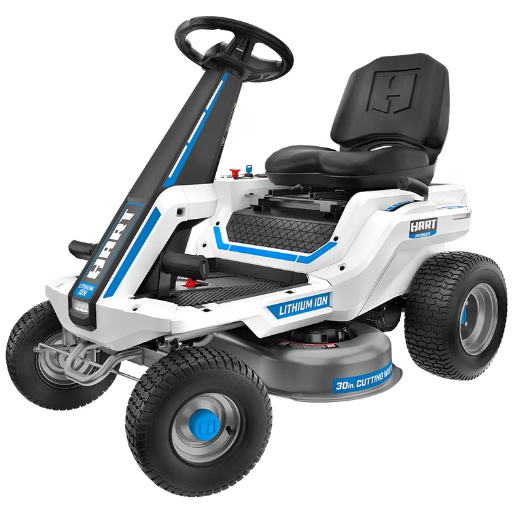
When picking riding mowers, several premier brands stand out for quality, performance, and durability:
1. John Deere
The John Deere S120 and X350 models have reliability and cutting precision going for them and are mostly preferred for both residential and commercial applications.
2. Husqvarna
The Husqvarna brand offers powerful and versatile options, such as the Husqvarna TS 348XD, that would be suitable for heavier terrains.
3. Cub Cadet
The Cub Cadet XT1 Enduro Series is innovative and simple to operate, making it an excellent choice for homeowners.
4. Troy-Bilt
On the lower price end, reliable Troy-Bilt lawn and garden tractors, like the Pony 42, are great lawn mowers for small to medium lawns.
5. Toro
High-performing zero-turn mowers from Toro’s TimeCutter series are the best for speedy precision mowing.
These brands and models have continued to be rated highly by end consumers and can be a good place to start for whatever riding mower you require.
John Deere Riding Mowers
John Deere riding mowers are renowned for their durability, innovative features, and outstanding performance. Designed to cater to a variety of lawn care needs, John Deere offers a wide range of models suitable for both residential and commercial use.
Popular Models and Features
- John Deere S100 Series
- Ideal for residential lawns, these models boast a powerful 17.5-hp engine and a smooth hydrostatic transmission, ensuring reliable performance.
- Equipped with a 42-inch Edge™ Cutting System, they provide a clean and precise cut.
- User-friendly design with an ergonomic operator station and adjustable controls.
- John Deere X300 Series
- Built for homeowners with larger lawns, the X300 series offers advanced features such as a heavy-duty frame and superior steering capabilities.
- Models like the X350 come with a 48-inch Accel Deep™ mower deck, which enhances cutting quality even at higher speeds.
- Twin Touch™ foot controls provide an intuitive operating experience.
- John Deere ZTrak Zero-Turn Mowers
- Perfect for maximizing efficiency, these zero-turn mowers are equipped with commercial-grade engines and reinforced decks.
- Options such as the Z345R feature a 42-inch cut width and a top speed of 7 mph, reducing mowing time significantly.
- Designed for exceptional maneuverability, these mowers are ideal for navigating around obstacles.
Husqvarna Riding Lawn Tractors
Husqvarna has established itself as a leading name in the riding lawn tractor market, offering products that balance performance, durability, and advanced technology. Designed for both residential and commercial use, these tractors provide a seamless mowing experience across a variety of terrains.
- Powerful Engines: Husqvarna riding lawn tractors are equipped with robust engines, such as Kohler or Briggs & Stratton, ensuring consistent power output and efficient fuel consumption. Models like the TS 354XD feature a 24 HP engine that easily tackles tough mowing tasks.
- Ergonomic Design: Built with operator comfort in mind, these tractors include features like high-back adjustable seats, ergonomic steering wheels, and vibration-dampening systems for prolonged use without discomfort.
- Advanced Cutting Systems: Husqvarna’s ClearCut™ fabricated cutting decks deliver precise and consistent results, even on uneven terrain, while the cutting width options—ranging from 42 to 54 inches—allow users to cover large areas faster.
- Hydrostatic Transmission: With a smooth and efficient hydrostatic transmission system, users experience effortless speed control for forward and reverse motion without the need for manual shifting.
- Versatility and Attachments: Many Husqvarna models are designed to handle more than just mowing. Compatible attachments, such as snow blades, trailers, and mulching kits, transform these tractors into year-round tools suited for multiple tasks.
- Durability: Built with reinforced steel chassis and solid construction, Husqvarna tractors are designed to withstand years of heavy-duty operation.
With their cutting-edge features and superior reliability, Husqvarna riding lawn tractors remain an excellent choice for both professional landscapers and homeowners who demand high-quality results and dependable performance.
Greenworks Electric Riding Mowers
Greenworks Electric Riding Mowers are the ultimate fusion of efficiency and sustainability. Designed for zero emissions and low maintenance, these mowers utilize powerful lithium-ion batteries that assure surging-level cutting performance while also saving the environment. I appreciate being able to mow quietly, instantly start my mower, and do so without the fumes or fill-up of gas or oil-one efficient and ergonomic way to do the chore with some green points to boot. From the design standpoint, with options such as cruise control to ensure comfort, Greenworks mowers are an excellent modern and forward-thinking way to keep your outdoor area glistening.
Comparisons: Riding Mowers vs. Other Lawn Care Equipment
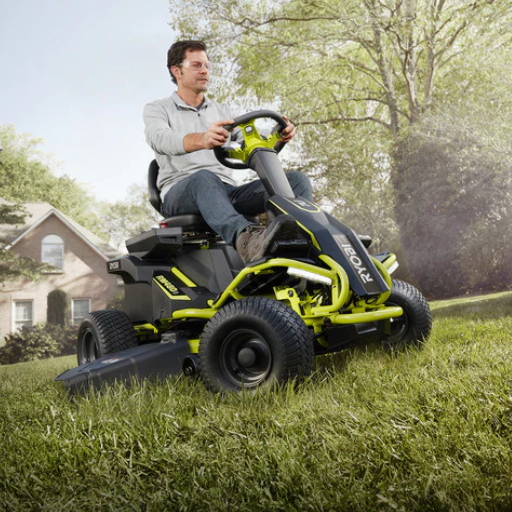
The main advantages of riding mowers over push mowers and walk-behind mowers are efficiency and convenience. Sitting ideal for bigger lawn spaces, riding mowers can cover more ground while demanding less physical effort from the operator. Compared with string trimmers or manual tools, they provide a more even cut and can easily cope with rough terrain. The upfront costs for riding mowers may be more on the high side; yet, by saving an enormous amount of time and offering great durability, these machines are justifiably worthy of being bought for bigger lawn maintenance. However, for smaller yards or tight spaces, the push mower and compact tools could be a more intuitive choice.
Riding Mowers vs. Push Mowers
Riding mowers are ideal for large, flat lawns, while push mowers are better suited for smaller, intricate, or steep areas.
|
Parameter |
Riding Mower |
Push Mower |
|---|---|---|
|
Size |
Large lawns |
Small lawns |
|
Terrain |
Flat, gentle |
Steep, tight |
|
Cost |
High |
Low |
|
Fuel Use |
High |
Low |
|
Maintenance |
Complex |
Simple |
|
Ease |
Comfortable |
Laborious |
|
Speed |
Fast |
Slow |
|
Storage |
Large space |
Compact |
|
Durability |
High |
Moderate |
|
Brands |
Toro, Craftsman |
Honda, Cub Cadet |
Riding Mowers vs. Zero-Turn Mowers
Riding mowers are versatile and user-friendly for general lawn care, while zero-turn mowers offer superior speed, precision, and maneuverability for larger or complex terrains.
|
Parameter |
Riding Mowers |
Zero-Turn Mowers |
|---|---|---|
|
Use Case |
General lawn care |
Large/complex lawns |
|
Maneuverability |
Moderate |
High |
|
Speed |
Standard |
Faster |
|
Cutting Precision |
Moderate |
High |
|
Terrain |
Flat/uneven |
Flat/complex |
|
Ease of Use |
Beginner-friendly |
Skilled users |
|
Cost |
Lower |
Higher |
|
Maintenance |
Standard |
Higher |
|
Durability |
Moderate |
High |
|
Fuel Efficiency |
Standard |
Variable |
When to Choose a Garden Tractor
Consider a garden tractor to be that versatile workhorse available to the homeowner with a large property or various landscaping chores. Garden tractors, unlike their counterpart riding mowers, are designed for more than just mowing. Their sturdy construction, moderately high horsepower engines, and the ability to hook up various attachments make them a better choice for any property over 2 acres or if it has uneven terrain, dense shrubs, or heavier workloads.
Practically, garden tractors shine in any heavy-duty work: plowing, tilling, hauling, or snow removal. Several models pack engines with anywhere from 18 to well above 30 horsepower to be able to haul heavy loads or to pull ground-engaging implements, such as cultivators or rototillers. Additionally, bigger wheels along with a strong chassis are much needed for balance when working amongst slopes or bumpy grounds.
Going by the data, it would indeed be wise to invest in garden tractors for year-round use. Snowblowers and the like provide great snow maintenance in the winter, whereas baggers, spreaders, and sprayers can enhance everyday lawn-care activities throughout the other seasons. These all-around upgrades turn garden tractors into an economical choice for those seeking a machine in every detail capable of executing multiple chores.
Garden tractors, however, may not be the right fit for smaller yards due to their size and limited maneuverability in confined spaces. They tend to be better for buildings with big expanses of lawn, garden, or geography where they would really shine in durability and adaptability.
Reference Sources
-
Ohio State University – Ohioline: Power Lawn Mowers
- Provides detailed information on lawn mower types, sizes, and options.
-
University of Florida IFAS Extension: Lawn Mower Safety
- Offers safety guidelines and best practices for using riding mowers.
-
U.S. Consumer Product Safety Commission (CPSC): Riding Lawn Mowers
- Covers recalls and safety notices for riding mowers.
Frequently Asked Questions (FAQs)
What are the benefits of using a zero turn riding mower?
A zero turn riding mower offers superior maneuverability, allowing you to navigate around obstacles with ease. Its design enables sharper turns and faster mowing, making it ideal for lawns with intricate landscaping. Additionally, zero turn mowers typically provide a more efficient mowing experience, reducing the time needed to mow your lawn.
Can I use riding lawn mower attachments with my zero turn riding mower?
Yes, many zero turn riding mowers can accommodate various riding lawn mower attachments. These attachments can include baggers, sprayers, and even plows, enhancing the versatility of your mower. Always check the compatibility of specific attachments with your mower model.
What is the difference between the x700 series and the x350 series of riding mowers?
The x700 series is designed for more heavy-duty tasks and larger properties, offering powerful engines and advanced features like a power lift system. In contrast, the x350 series is better suited for smaller properties and basic mowing needs, providing a more compact and economical option. Depending on your lawn size and type of terrain, one may be more suitable than the other.
How do I maintain my zero turn lawn mower for optimal performance?
To keep your zero turn lawn mower in top shape, perform regular maintenance such as checking and changing the oil, cleaning or replacing the air filter, and sharpening the mower blade. Additionally, ensure the tires are properly inflated and inspect the mower parts for wear and tear. Regular maintenance helps extend the life of your mower.
Where can I find mowers for sale, specifically zero turn riding lawn mowers?
You can find a variety of zero turn riding lawn mowers for sale at local dealerships, online retailers, and specialized outdoor power equipment shops. Websites that offer a selection of riding lawn mowers often provide customer reviews and comparisons, helping you choose the best model for your needs.
Are electric lawn mowers as effective as gas-powered riding mowers?
Electric lawn mowers, including battery-powered riding lawn mowers, are increasingly effective and efficient. They offer quieter operation, lower maintenance requirements, and no emissions. However, gas-powered mowers may still provide more power and longer runtime for larger properties, while electric models are perfect for smaller lawns.
What is a dual port charger and how is it used with cordless riding mowers?
A dual port charger allows you to charge two batteries simultaneously, which is particularly useful for cordless riding mowers. This feature ensures that you have a backup battery ready to go, minimizing downtime and allowing you to mow larger areas without interruption.
What size deck should I choose for my riding lawn mower?
The size of the deck you choose for your riding lawn mower largely depends on the size of your property and the type of terrain you need to mow. A larger deck size, such as 54-in or 60v, can cover more ground quickly, but may be less maneuverable in tight spaces. Conversely, a smaller deck, such as 42-in or 48-in, is better for intricate lawns with many obstacles.
What are the advantages of using a battery-powered riding lawn mower?
Battery-powered riding lawn mowers offer several advantages, including quieter operation, lower emissions, and reduced maintenance. They are typically lighter and more maneuverable than gas models and can be charged at home using standard outlets. Additionally, advancements in battery technology have improved their runtime and overall efficiency.



